Weekly Review for June 21, 2024
This informal report by the Division of Entomology & Plant Pathology is a commentary on insects, diseases, and curiosities division staff encounter on a week-to-week basis. Comments and questions about this report are welcome and can be sent to your respective Inspector.
Our Website
Inspector Territories
Announcements
1) Indiana DNR’s 2024 Spongy Moth aerial treatments were completed as of Monday, June 17. Please visit our spongy moth website for more information on our treatment program.
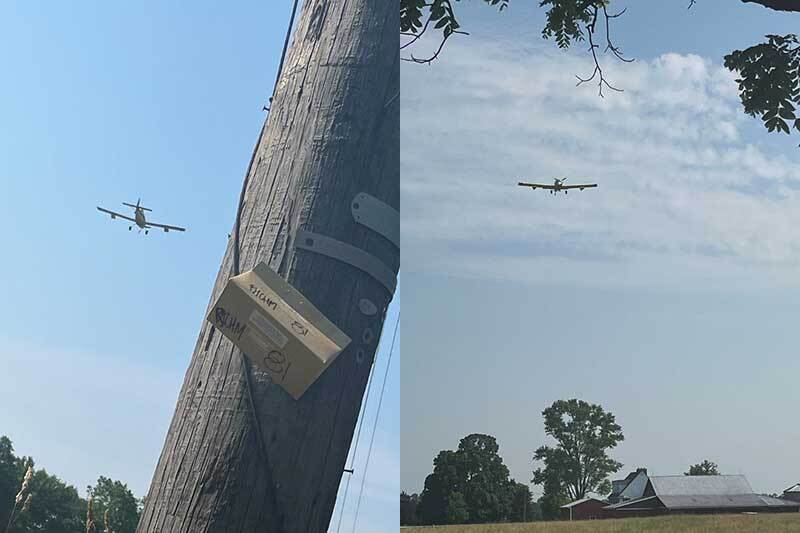 |
Photos: Spongy moth mating disruption treatment in Richmond, Indiana (photos by Jared Spokowsky)
2) Nursery inspector Will Drews received an award from SICIM (State of Indiana Cooperative Invasives Management) for his work with terrestrial invasive species at the 2024 Indiana Invasive Species Conference at Brown County State Park. Congratulations Will!
Reports
Diane Turner (Nursery Inspector & Compliance Officer) –
I have recently been seeing a good amount of red-headed flea beetle, Systena frontalis, damage specifically on hydrangeas in nursery production throughout Indiana. This small insect is about 1/6 inch long with a metallic black oval body and a reddish-yellow head. As the name suggests, this flea beetle jumps when disturbed, like a dog flea.
Adult beetles feed on the leaves of a wide variety of popular ornamental shrubs like hydrangea, azaleas, rhododendrons, weigela, and roses. Although the leaf-feeding rarely harms overall plant health, plants with a significant amount of damage are often too unsightly to sell.
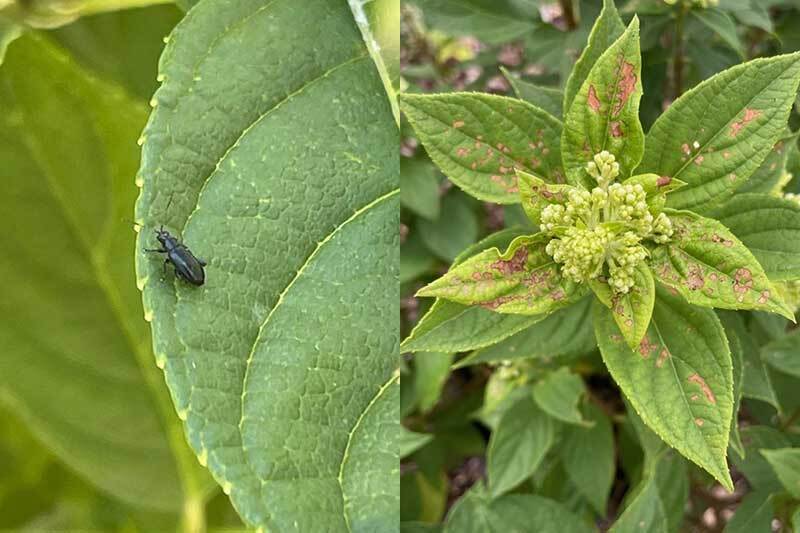 |
Left: Red-headed flea beetle, Systena frontalis, adult on hydrangea (Hydrangea spp.) Right: Feeding damage caused by the adult red-headed flea beetle on hydrangea leaves.
Kristy Stultz (Nursery Inspector & Compliance Officer) -
A lot of Christmas tree growers also dig nursery stock. While doing an inspection for one such establishment, I noted tags from last season. It’s important to remember to remove those tags, especially if they’re snugged on tight like this one. It won’t take that branch long to girdle itself.
One of the best things about inspecting any type of nursery is the opportunity to stop and smell the roses, or in this case, stop and watch a hover fly enjoy field sowthistle. Someone should enjoy this non-native flower.
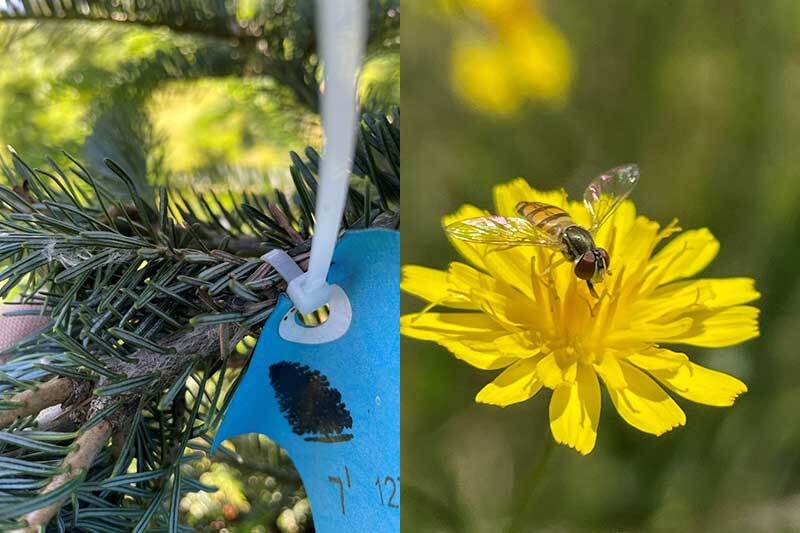 |
Left: Forgotten tag on Christmas tree which can lead to girdling. Right: Hover fly on non-native field sowthistle.
Jared Spokowsky (Nursery Inspetor & Compliance Officer) -
I wish I could say I had some good news for once but as I usually tell people if I show up it’s not good news. The first research paper confirming Tropilaelaps mites in western Russia on Ukraine’s border was released last month. You can read the whole paper (its only two pages) at this link. After Varroa every beekeeper should be familiar with this. It’s not in the western hemisphere yet but its pattern of spread indicates it could be in short order. There are very few people in positions like mine across the country so it’s most likely going to be found by a beekeeper first. Without early detection and reporting we have little chance of eradication before it becomes established. Currently the only thing that works at controlling these mites is formic acid and brood breaks.
I’ve been taking so many photos of what bees are working while doing inspections I am going to start to unload some more of them here. At the end of the season, I hope to put a complete list together with a few notes on preference.
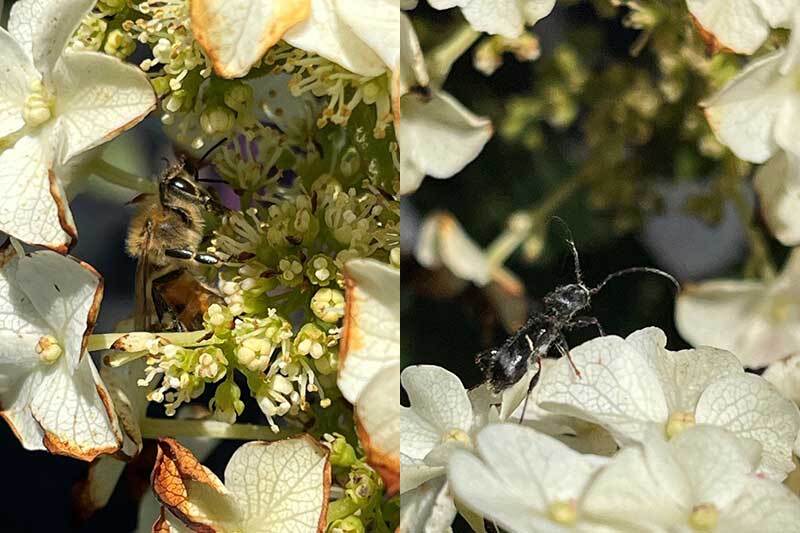 |
Left: Honeybee on Quickfire Hydrangea (I was quite surprised how much activity this had). Right: Quickfire hydrangea also had quite a bit of other insect activity including this longhorned beetle.
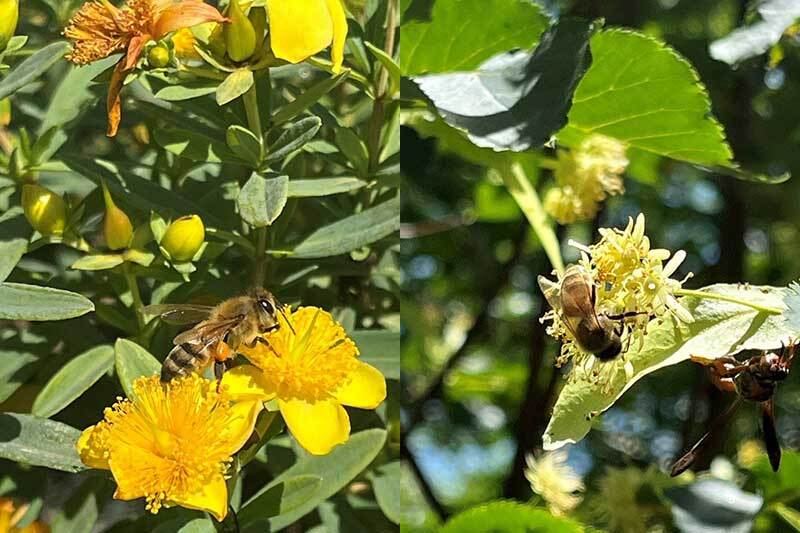 |
Left: Honeybee on Blue Velvet St. John’s wort (Sunburst is also a common variety that gets a lot of activity, I think all St. John’s wort does for that matter). Right: Honeybee and a paper wasp on a linden.
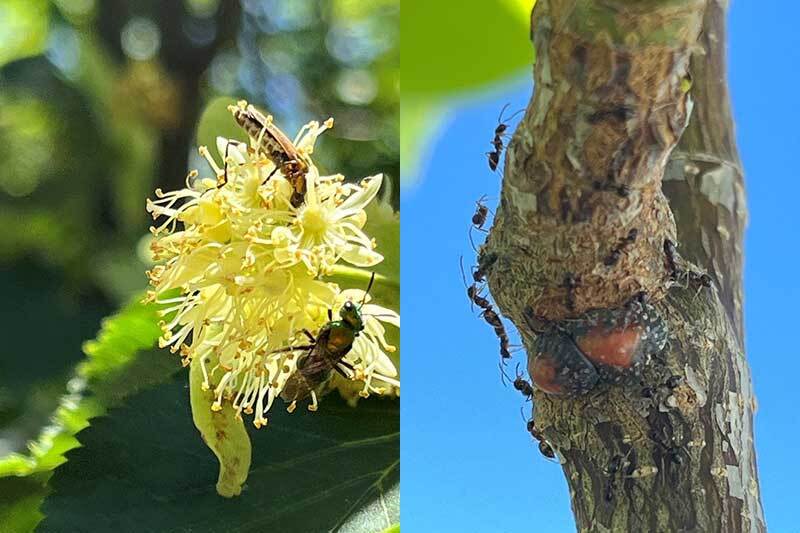 |
Left: Lindens attract quite a few insects including this soldier beetle and green sweat bee. Right: tuliptree scale.
In addition to bees I’ve seen a few other issues on nursery stock including tulip tree scale on tulip poplar, fall webworm on redbud, rose rust, fire blight on ninebark, quince rust on service berry, Japanese beetle, cottony maple scale and ambrosia beetles.
 |
Left: Fall webworm on redbud. Right: Rose rust (top of leaf).
 |
Left: Rose rust (bottom of leaf). Right: Rose rust close up.
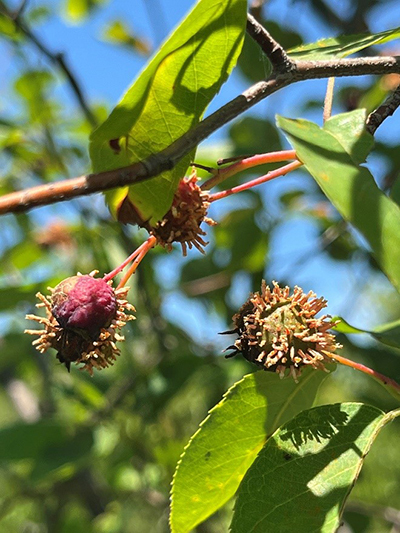 |
Quince rust on serviceberry.
 |
Ambrosia beetle damage and the same area showing the bark removed to see the hole more clearly.
 |
Left: White oak in a landscape with herbicide damage. I have noticed a marked increase in this type of damage since Dicamba resistant soybeans were released. This was not a nursery tree but an established landscape tree next to the nursery. Right: Redheaded ash borer. This is a native ash pest which can cause significant damage to ash but this is the first time I have seen it in quite a few years.
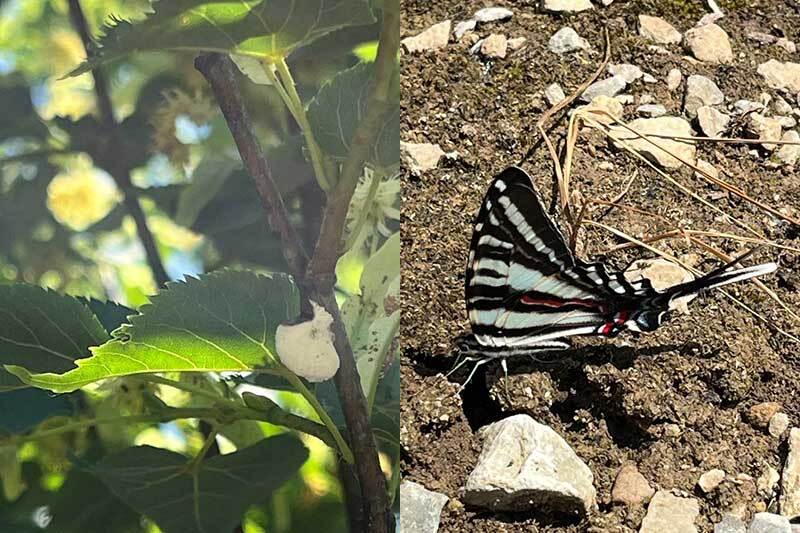 |
Left: Cottony maple scale on linden. Right: Zebra swallowtail. The host for this butterfly (which is one of our most impressive IMO) is the paw paw. I tend to only find these in VERY close proximity to paw paw. But I did have a nursery owner who planted a bunch of paw paw and within a couple years he had them flying around the nursery so I guess you could say “plant it and they will come.”
Eric Biddinger (Nursery Inspector & Compliance Officer) -
I have heard a meteorologist call our current weather pattern a “flash drought.” With that in mind, irrigation should be on everyone’s mind. Along with increased watering, be on the lookout for leaching and nutrient deficiency issues, especially in smaller containerized stock.
While working through a Christmas tree farm last week, I spotted this droopy white pine. Turns out this was white pine weevil damage. So often we catch this critter in the second year after the center leader is already dead. At this point, the larvae were already down to the next node and have already caused significant structural damage to this tree.
 |
White pine weevil damage.


